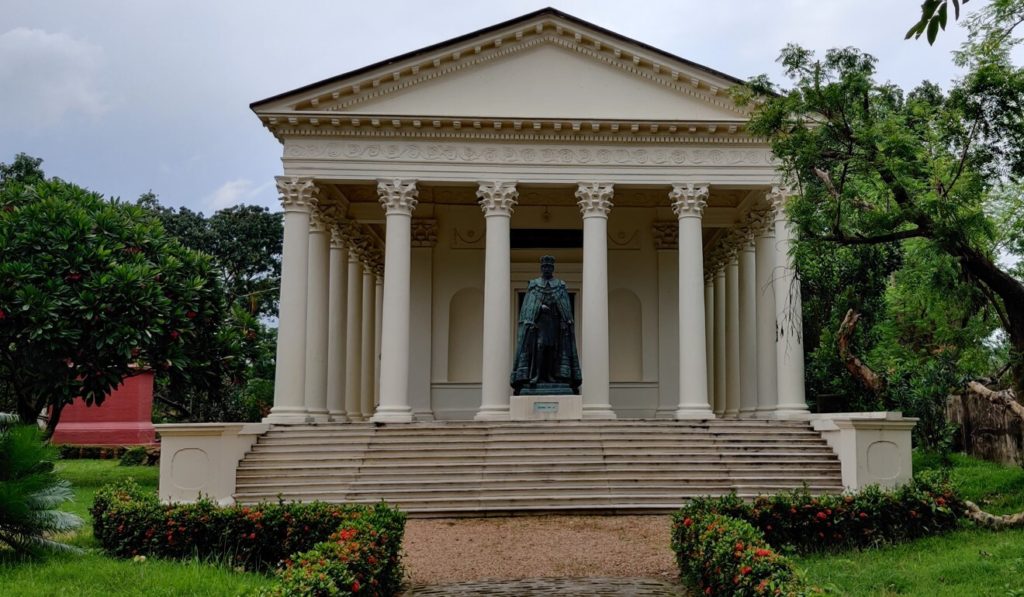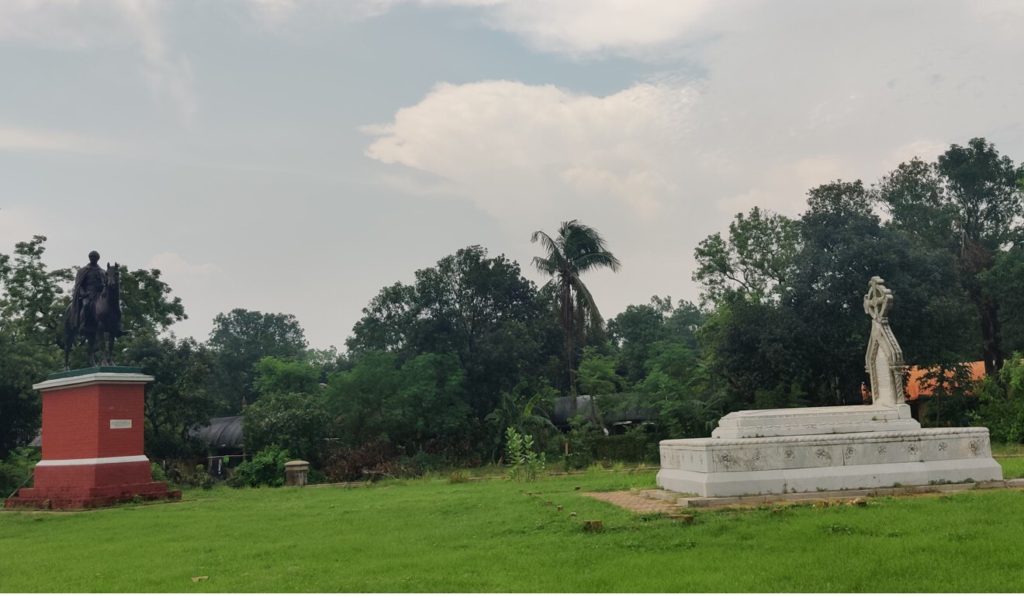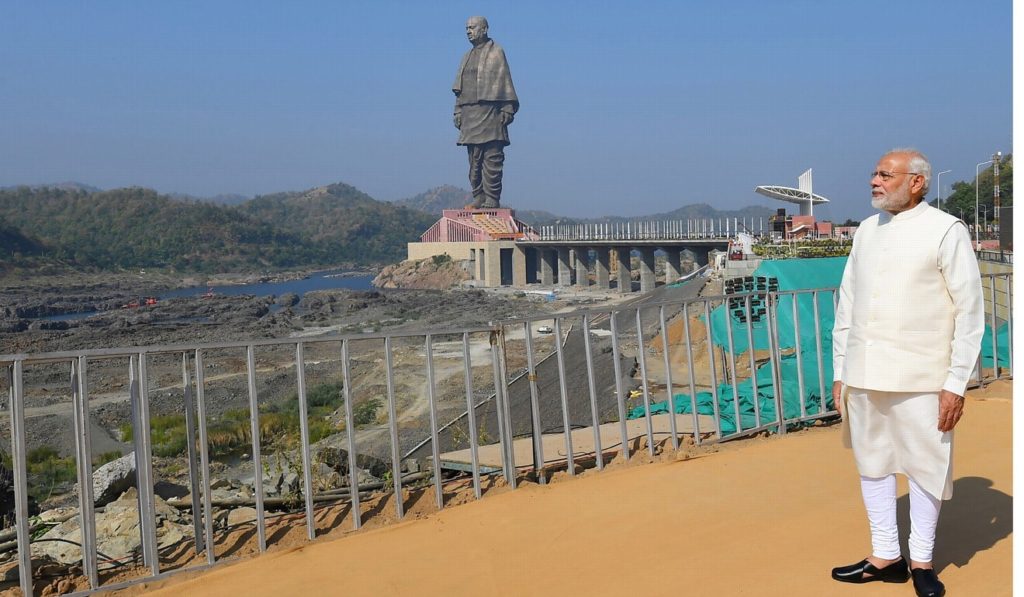How India Quietly Removed the British Colonists from Their Pedestals
On the river banks in Barrackpore, a sweltering town some 30km from Kolkata, the statues of 13 dead British men stand high above the ground on brick-red plinths. One is made of marble and 12 are made of metal, but they all have the identical distant gaze – instantly recognisable to every Indian as the contempt with which government service officers treat them.
In 1969, 22 years after India’s independence, these statues were taken down from their pedestals at the intersections of the busiest streets of what was then known as Calcutta, the British Empire’s second-biggest city after London until 1911. The move was taken by the first non-Congress government in Bengal, the state from which the British began their “raj” of Indian territory. It is unclear what the motivations were, as there had been no reports of attacks on colonial statues, unlike in other Indian cities in the mid-1960s.

“Perhaps Bengal and Bengalis had gained some sort of immunity from statuary as a form of colonial memorialisation because we have a far longer historical association with British rule,” said Dr Jayanta Sengupta, curator of the highly-rated Victoria Memorial Hall museum in Kolkata. “It is documented, for instance, that Bengalis are the first non-English-speaking people to learn English. And Bengalis monopolised clerical jobs all over British India. They gained from Empire.” The Victoria Memorial Hall houses the first group of colonial statues that were moved – 25 statues and 40 busts – back in 1921 when the memorial opened to the public. It was the British themselves who moved them.
It was not until 1964 that the colonial statues were attacked, or they started to be removed from the big cities. The question is, why were they standing so long after independence?
The answer likely has to do with India’s first prime minister Jawaharlal Nehru, who was against their removal. His government practised continuity with the British administration in many ways, including retaining the colonial habits of government services. The country’s socialist parties mounted a public campaign against colonial statues, but the status quo appeared to hold until Nehru’s death in 1964.
The statues in Calcutta appear to have been moved after considerable thought. Twelve of them are arranged on the grounds at Flagstaff House, which is now part of the Governor of Bengal’s official state residence. It was completed in 1865 and was part of the British Governor General’s estate. A 13th statue – that of Lord Canning – is thoughtfully placed near his wife’s tombstone.
The information that the colonial statues are here is not easily known. A search on Google, for instance, reveals stories of only Delhi and Mumbai’s statuary. It was a chance conversation with walking tour curator Anthony Khatchaturian that revealed their whereabouts.
It is, in a way, a considerate homecoming. Barrackpore is the oldest British cantonment in India. It was called “Little England” by Britons, possibly because the river reminded them of the similarly dark expanse of the Thames in London, and the proximity to other European powers. Across the river from Barrackpore is Serampore, once the toehold of the Danish in India. Chandannagar, a French town in Bengal, is 20km away from Serampore, and next to it is Chinsurah, the seat of the tiny Dutch colony in Bengal.
All the men were British administrators – governor generals, viceroys and various titles of imperial grandstanding. A large number of them were obscure, most of them were human rights violators and, as such, their removal from the public eye appears well anticipated. One of the figures was of Lord Curzon, the administrator responsible for the partition of Bengal in 1905, which acted as the precursor to the Partition of India in 1947 that caused one of the largest human migrations ever.

In New Delhi, there were two attacks on statues – one in 1964 and the second in August 1965 – on the most prominent statue in the capital, that of King George V, which stood in a canopy overlooking the India Gate, one of New Delhi’s most recognised monuments. Soon after, the statues were placed in Coronation Park. This is the site of the Delhi Durbar held by then British monarch George V in 1911 to mark the change in the imperial Indian capital from Calcutta to New Delhi.Today, it is an obscure park.
In the years between 1950 and 1970, there were regular questions in India’s parliament about what to do with the colonial statuary, academic Dr Sushmita Pati wrote in a paper titled A Nation Set in Stone. Several parliamentarians wanted to erect statues of Indian nationalists, primarily M.K. Gandhi. Nehru instead wanted a coherent policy.
“There are various kinds of statues, some may be considered historical, some may be considered artistic, and some may be considered, well, rather offensive in themselves, and of various types,” Nehru said in a parliamentary speech in 1957. “Our general attitude has been, first of all, to remove such as might be considered offensive, and that too gradually without making too much fuss and without doing anything to raise ill will between countries.”
In Bombay in 1965, days after the attack on King George V’s statue, a handful of colonial statues were attacked, said Dr Preeti Chopra, professor of art history and architecture at the University of Wisconsin-Madison, whose research focuses on the spatial landscape of the British Empire. Queen Victoria’s crown was broken and other statues suffered facial and cranial damage. There was a threat to the city’s most iconic statue, that of King Edward VII on a black horse, popularly known as the Kala Ghoda.
“A hundred policemen were deployed around the statue,” said Chopra. “The municipal corporation moved the statue stealthily at night to a park known as Jijamata Udyaan. Only in 1961, a committee had found that very few specimens of colonial statuary had been destroyed and that not any were offensive.”
A large number of British statues were also placed in the Jijamata Udyaan park, which was originally called Victoria Gardens and was renamed after the Maratha king Shivaji’s mother, as well as in the Bhau Daji Lad museum in the garden.
The process of reclaiming names of roads, parks and intersections from British nomenclature is ongoing in all Indian cities. Mumbai’s Unesco heritage train station, originally called Victoria Terminus, has now been named Chhatrapati Shivaji Terminus, after a Maratha king – leading to the joke that this is the best-known sex change in the world.
The names of the cities have changed too – Calcutta is now Kolkata, Bombay is Mumbai, the presidency of Madras is Chennai.
The most enduring legacy of the British, arguably, is the disdain government service officials have for citizens, the “babu” look they get when they try to get work done, like the distant looks the statues wear.
As the statues of slave trader Edward Colston, former British prime minister Winston Churchill, Indian national icon M.K. Gandhi and Spanish explorer Christopher Columbus are felled or defaced on both sides of the Atlantic, and demands to remove those of British plunderer Robert Clive and imperialist Cecil Rhodes grow louder, there have been reports of India’s discreet removal of colonial statues.
The tone is unmistakably self-congratulatory, highlighting that India pre-empted the angry confrontations that have erupted in Britain,the US and South Africa. But South Africa’s history of freedom from colonial apartheid is much more recent, dating back to 1994. The US is what is called a settler colony, where colonisers remained behind, as in Australia and New Zealand. Britain gained massive wealth from its colonies, thanks to the work of men like Colston. In a sense, the conversation about colonial statues has been easier for a nation like India with its celebrated national movement for independence.

The more vexing conversation was who would replace those colonial statues. There was a long period when the statue pedestals stood empty,” said Jawhar Sircar, former culture secretary for the Government of India, the highest bureaucratic office in the administration.
“Those decisions took much longer than the decision to remove the statues. In a way, statue politics continues today, with Prime Minister Narendra Modi commissioning the Statue of Unity, currently the tallest in the world, of nationalist leader Sardar Patel. Another statue is being built in Mumbai, of Maratha warrior Shivaji, which will surpass the height of the Statue of Unity. Yet another has been announced of the mythical figure Ram, which will be even taller than Shivaji’s figure,” Sircar said. “One set of heroes is being replaced by another. But there is one question of aesthetics: do these new statues have the same quality of workmanship as the colonial statues? What kind of work are we showing to the world?”
Originally published in The South China Morning Post